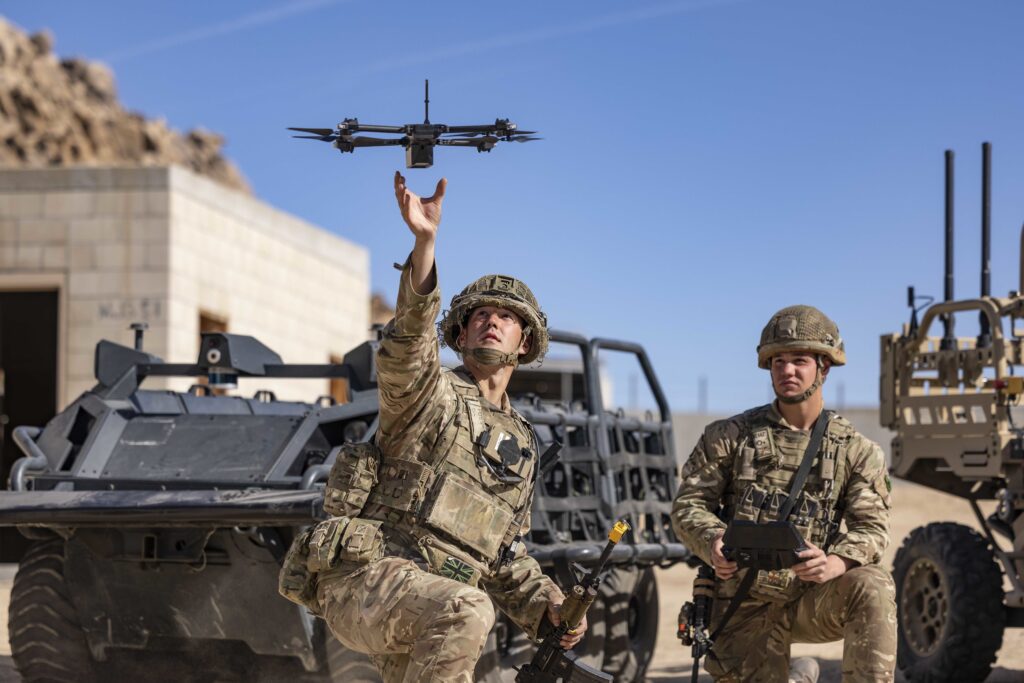The landscape of modern military technology is constantly evolving, with new innovations shaping the way wars are fought and won. From drones to cyber warfare, these advancements have the potential to revolutionize the way that military operations are conducted. In this article, we will explore some of the top innovations that are currently shaping modern military tech.
Perhaps one of the most well-known innovations in modern military technology is the use of drones. Drones, also known as unmanned aerial vehicles (UAVs), have been used in military operations for decades, but recent advancements in technology have made them more effective than ever before.
Another major innovation in modern military technology is the use of cyber warfare. Cyber warfare involves using computer networks and information technology to disrupt or destroy an enemy’s infrastructure, communication systems, and other key assets.
Artificial intelligence (AI) is also playing an increasingly important role in modern military technology. AI can be used to analyze vast amounts of data, detect patterns and trends, and make decisions in real time.
The innovations discussed in this article are just a few examples of the many ways that technology is shaping modern military operations. From drones to cyber warfare to artificial intelligence, these advancements have the potential to revolutionize the way wars are fought and won.
From Drones to Cyber Warfare: The Top Innovations Shaping Modern Military Tech
The landscape of modern military technology is constantly evolving, with new innovations shaping the way wars are fought and won. From drones to cyber warfare, these advancements have the potential to revolutionize the way that military operations are conducted. In this article, we will explore some of the top innovations that are currently shaping modern military tech.
Drones
Perhaps one of the most well-known innovations in modern military technology is the use of drones. Drones, also known as unmanned aerial vehicles (UAVs), have been used in military operations for decades, but recent advancements in technology have made them more effective than ever before.
One of the key benefits of drones is their ability to conduct reconnaissance missions without putting human lives at risk. Drones can fly over enemy territory, collecting vital data and providing valuable intelligence to military commanders. They can also be equipped with weapons, allowing them to strike targets with precision and accuracy.
In addition to their use in reconnaissance and strikes, drones are also being used for a wide range of other applications, such as search and rescue operations, disaster relief efforts, and border security. The versatility and effectiveness of drones make them a crucial tool in modern military operations.
Cyber Warfare
Another major innovation in modern military technology is the use of cyber warfare. Cyber warfare involves using computer networks and information technology to disrupt or destroy an enemy’s infrastructure, communication systems, and other key assets.
Cyber warfare can take many forms, from launching cyber attacks on enemy networks to hacking into critical systems and stealing sensitive information. This type of warfare is becoming increasingly common in modern conflicts, as countries realize the potential power of cyber attacks.
One of the key benefits of cyber warfare is that it can be conducted with relatively low cost and risk, making it an attractive option for nations looking to gain a strategic advantage over their enemies. However, cyber warfare also poses significant challenges, as countries must constantly defend their own networks from potential attacks.
Artificial Intelligence
Artificial intelligence (AI) is also playing an increasingly important role in modern military technology. AI can be used to analyze vast amounts of data, detect patterns and trends, and make decisions in real time. This can help military commanders make more informed decisions and respond more quickly to changing battlefield conditions.
AI can also be used to control unmanned vehicles, such as drones and autonomous weapons systems, allowing them to operate with greater autonomy and effectiveness. This can help reduce the need for human intervention in dangerous situations and improve the overall efficiency of military operations.
Conclusion
The innovations discussed in this article are just a few examples of the many ways that technology is shaping modern military operations. From drones to cyber warfare to artificial intelligence, these advancements have the potential to revolutionize the way wars are fought and won.
As technology continues to evolve, it is clear that the military will need to adapt to these changes in order to maintain a strategic advantage over potential adversaries. By embracing these innovations and staying ahead of the curve, countries can ensure that their military forces remain effective and relevant in the modern era.
